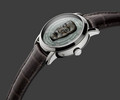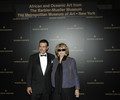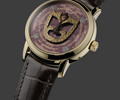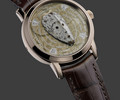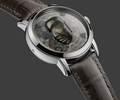Vacheron Constantin Métiers d’Art “Les Masques”
2009 - Celebration of a collection “Les Masques”
| Rating: 55 %1000 with 391 votes |
 Yes 1
Yes 1  Not so much 0
Not so much 0
- Summary
- Vacheron Constantin Métiers d’Art “Les Masques”
- 2009 - Celebration of a collection “Les Masques” part 2
- 2009 - Celebration of a collection “Les Masques” part 3
- 2009 - Celebration of a collection “Les Masques” part 4
“There is nothing on earth which is more desirous of beauty and which embellishes itself more readily than a soul... That is why few souls, on earth, can resist the domination of a soul dedicated to beauty.”
Maurice Maeterlinck, The Treasure of the Humble
What do these masks from Africa, Asia, Oceania and the Americas tell us? And what, in particular, is their connection with Haute Horlogerie? “Everything” and “It’s obvious” are possible answers. But that would be too simplistic. The road which led to the creation of this collection was long, sinuous, and peppered with obstacles patiently surmounted. The end result is well worth all the passion that has been invested in it.
The idea for this collection grew out of an awareness of a renewed interest in tribal art. The so-called primitive arts are currently experiencing a new golden age, as witnessed by the long-awaited and much delayed opening of the Quai Branly Museum in Paris and by record auction prices: in June 2006, for example, a Fang mask fetched 5.9 million euros at the French auction-house Hotel Drouot. It was the largest sum ever paid at an auction for a piece of tribal art. Admittedly, the object belonged to Pierre Vérité, one of the leading dealers in 20th century African art, but the price is light years away from the five dollars Max Ernst gave the New York second-hand goods dealer, Julius Carlebach, in 1941 for an Eskimo spoon!
One way to understanding the world
It was in the 19th century that collectors first began to display an interest in “primitive” art. They were able to perceive its intrinsic value and recognise it as a work of art. It was hardly surprising, therefore, that it was artists who were the first to decipher these objects, which said so much with so little. A few sculpted holes in the wood: two for the eyes, one for the nose, and one for the mouth. The modern artists of the time were well aware that art is one of many ways to understanding the world.
The discovery of tribal art induced these artists to follow the lessons of Cézanne, a father to all of them, to take a new look at perspective, rethink volume and space, break with realism, free themselves from the lessons of academicism, and invent a new way of representing reality in order to capture the essence of being. The Fauvists – Matisse, Derain and Vlaminck – Surrealists and Cubists all came into contact with tribal art and this way of capturing forms by stripping them to a bare minimum. “In certain masks from the Ivory Coast, the Cubists saw signs which, renouncing all imitation, invited the viewer to imagine the face whose forms were not reproduced on these masks,” wrote Daniel-Henry Kahnweiler, a leading art dealer and publisher(2).
Despite the celebrated words – “African art? Never heard of it!” – Picasso drew on African art, as well as Iberian art, for inspiration in putting the finishing touches to his painting Les Demoiselles d’Avignon, the founding work of Cubism, which he began in 1906 and finally finished in July 1907.
"Les masques" watches 2009 by Vacheron Constantin:
Vacheron Constantin AFRICA - GABON
Vacheron Constantin AMERICAS - MEXICO
Vacheron Constantin OCEANIA - INDONESIA
Vacheron Constantin ASIA - CHINA




